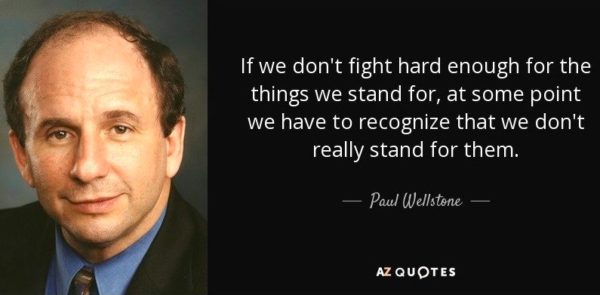Whenever we judge something, there is always at least some shift in our state of mind. If we experience it as Good, we might feel: pride, hope or relief.
If we experience it as Bad, we might feel let down, jealousy or frustration. These shifts in our state of mind impact how we respond to life and the choices we make.
I propose that we don’t ever need to utilize the concepts of good or bad in order to make effective choices. In fact, it makes us less effective in everything we do. So I would like to present a simple way to teach this to our students. But first let me explain how I came to this understanding.
A few years ago I experienced depression and anxiety. At first, I felt that life had become less interesting. Then, I started getting angry at my kids.
And I started forgetting things. I wasn’t able to concentrate. Then one day I developed anxiety. I couldn’t block out any stimulus, especially background music.
I didn’t know what was happening but I was sad and very scared. And I “judged” this as a Bad situation.
My doctor proscribed more sleep, better diet, more exercise and mental therapy. I took medication to temporarily boost the range of the emotions I could experience. But the therapy is the key. It exposed me to some things that have actually made me grateful for my depression.
First, by looking inward, I learned that there can be love in sadness. It’s a love we don’t often get to see and experience if we are always happy.
Also, It lead me to pursue work as an assistant instructor with an outdoor education organization where I learned about SEL. There, I learned a phrase: “who knows what is good or bad”. That phrase involves telling a story where things that first appeared bad, eventually lead to good outcomes.
Lastly, my therapy encouraged me to really looked deep and deliberately at how I witness my experiences in life. Specifically, the emotions I experience when I judge things
So What exactly are all of these emotions of judging?
These emotions are a function of comparing our expectations of what we believe life “should be like” to our actual observations of life. And we have a physiological reaction
The act of judging is a habit, though feels instinctual.
The act of judging is learned. We learn it as a child. We all develop this conditioning. We learn what is good or bad by reading our parents facial expressions, from being laughed at, from being cheered in sports, and from advertising. As a result, we spend our lives trying to fix the things we have learned to perceive as bad. And we want to build a protective wall around the things we perceive as good.
But the only truth in life is that we don’t know how anything will turn out. Everything changes without any assistance from us, even the things we build a wall around to protect.
But here is the thing, we already know we can’t rely on our judgments at any one moment. For example: we are taught early on to count to 10 before we react. To go for a walk, or to sleep on it when we are upset. Why, because an important basis for making our judgments is our state of mind. And that basis changes over time.
So how do we find a reliable and stable state of mind? One from which we can really trust to make our choices in life? The answer is a paradox. (and it’s the big take-away from all of this) I would suggest that a reliably stable state of mind is only possible if we ignore the impulse to judge.
So if we just don’t give so much attention to these judgments when they arise
then what is left in our awareness is: a mind that isn’t so inundated with things like the fear of missing out, anger, pride or self-doubt.
And from this part of ourselves, we can simply witness that sometimes our judgments can make us experience life as great, we witness that sometimes our judgments can make us mad, sometimes very sad, but these emotions don’t have such a strong grip on us if we can see why they come about.
That was a big part of my therapy
I knew I had a mental disease, and I knew I needed help. And as a confident adult I was able to get help. But imagine one of your students in class with the same symptoms: lack of concentration, irritability, anxiety, scared. This is often a student afraid to speak to anyone to get help. This is a student we are likely to miss
So what can we do if we can’t find the kids who need our help the most? Well, instead of just treating depression by helping kids in crisis survive, we can teach every kid the skills to thrive in life. This therapy can help with both treatment and prevention.
How did we teach it in our class? We started with looking at the phrase “who knows what is good or bad”. The kids can explore and share situations in their own lives where things had unexpectedly shifted from bad to good.
Once they have this background, then, we create situations where they can observe their impulses to have strong emotional ties to judgments. We do this with personal and group challenges that push them way out of their comfort zone.
At first, the students in our summer school class would sometimes assume they had the best idea and would simply blow off suggestions from others. But after having a shared language and understanding of “who knows what is good or bad” and what that means, it gave them a universal tool they could effectively use within the group. If for example, a student would be too critical of somebody’s ideas, the other students might simply chime in “Who knows what is good or bad?” That phrase didn’t come across as confrontational within our group. They learned the usefulness of another students ideas may not be apparent at the moment, but things could look different as they moved forward. So this tool allowed them to regulated their impulsive reactions as a group.
So that’s it! Give them a shared language with a shared meaning and they will use it among themselves.
There are pitfalls, however, that we will likely face as teachers:
We are used to talking in terms of good and bad in order to push kids toward success, (as if we know what that should be for them.) It can be helpful to inform kids of their options, but by actively promoting certain choices for them as good or bad, it just perpetuate this habit in them to judge. If you want to use this approach, you have to watch out for that tendency in yourself.
A second pit fall is to think that the concepts of good and bad are necessary in order to make effective ethical choices.
But we don’t need to say something is bad in order to decide to make a change. We don’t need to say something is good in order to work hard toward that end. When we learn to place less importance on our judgments of good or bad, then the actions we do take will inherently tend to be more driven by feelings of generosity and love.
Here is why that is: struggling with our constantly changing state of mind is hard stressful work (which can lead to depression). But its completely effortless to act out of generosity and love. Acting out of a self-imposed obligation to help others is hard. Acting because that’s where your heart takes you is effortless. We don’t have to go search for love. It only becomes obscured by this habit of comparing life to our expectations for life. The habit pulls us away from our most true and natural path.
And if there is generosity and love in the path, then our choices will always be just fine. Always. And it doesn’t have to be any more complicated that.
[In the Summer of 2018, Trailhead Perspectives teamed up with the Whitewater Unified School District and the University of Wisconsin, Whitewater to deliver a social emotional learning summer school course to middle school children. We received a grant from the Novo Foundation to continue this program in 2019. Part of this included an invitation to participate in a conference in Albuquerque, New Mexico in October 2018. This was a way for all the social emotional learning grant recipients from across the country to learn from each other. As CEO of Trailhead Perspectives, I was invited to present an “ED Talk” to all the recipients. This post is a transcript of that talk]




